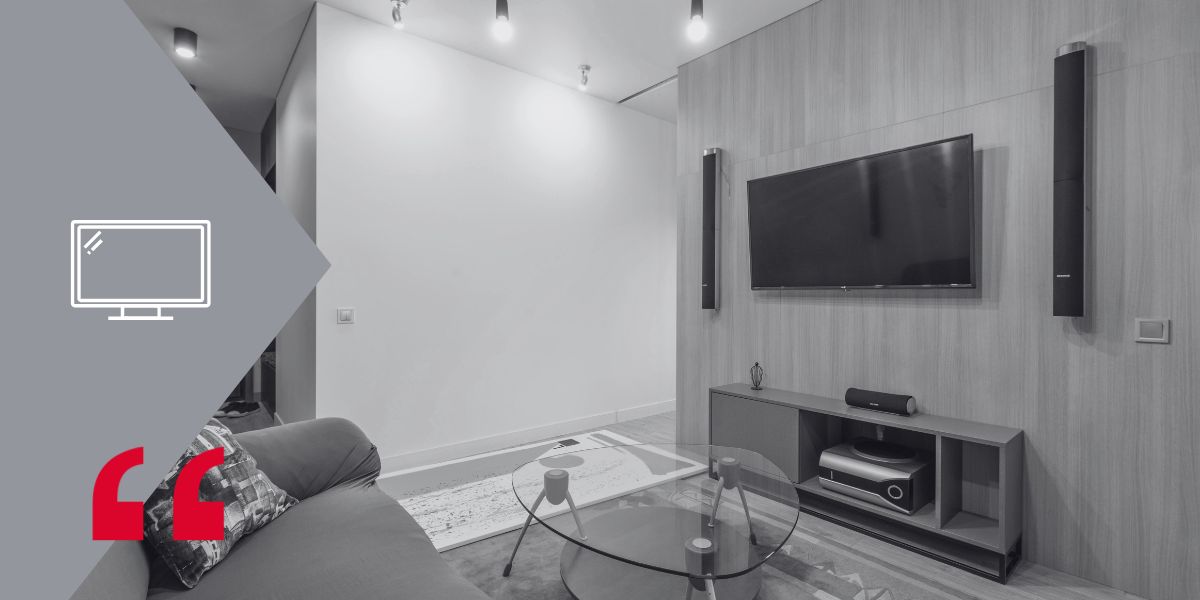The VESA TV standard is a universal mounting system that allows you to securely and effectively attach TVs to wall mounts. This standard is widely adopted by TV and mount manufacturers, facilitating compatibility and installation. In this article, we will explain how you can determine if your TV has a VESA mount and what aspects to consider when installing it.
What is the VESA TV standard?
The VESA TV (Video Electronics Standards Association) standard defines a pattern of holes on the back of the TV that allows it to be mounted on a compatible mount. This pattern is measured in millimeters and consists of two numbers: the horizontal and vertical distance between the mounting holes. For example, a VESA 200×200 indicates that there are 200 mm between the horizontal holes and 200 mm between the vertical holes.
Advantages of VESA TV mounts
Using a VESA TV mount offers multiple benefits:
- Universal compatibility: Most TV and mount manufacturers follow this standard, ensuring that products are interchangeable.
- Easy installation: VESA TV mounts are easy to install and come with clear instructions.
- Safety and stability: Wall mounting reduces the risk of the TV falling or being damaged.
- Space optimization: Mounting the TV on the wall frees up floor space and improves the room’s aesthetics.
How to determine if your TV has a VESA mount
To know if your TV is compatible with a VESA TV mount, follow these steps:
1. Check the user manual
The first step is to consult your TV’s user manual. In the technical specifications section, you should find information about VESA TV compatibility. Look for terms like “VESA pattern” or “VESA mount.”
2. Inspect the back of the TV
Look at the back of your TV and look for mounting holes. These holes are usually arranged in a rectangular or square pattern. Measure the distance between the horizontal and vertical holes to determine the size of the VESA TV. For example, if the distance is 200 mm both horizontally and vertically, your TV has a VESA 200×200 pattern.
3. Check the manufacturer’s website
Visit your TV manufacturer’s website and search for your specific TV model. In the specifications or technical characteristics section, the information about VESA TV compatibility should appear.
Choosing the right VESA TV mount
Once you have confirmed that your TV is compatible with a VESA TV mount, it is important to choose the right mount. Here are some aspects to consider:
Maximum load
Make sure the VESA TV mount can support the weight of your TV. Check the mount’s specifications to verify its maximum load capacity.
Flexibility and adjustment
Some VESA TV mounts allow you to adjust the tilt and swivel of the TV. This can be useful for optimizing the viewing angle and reducing glare.
Compatibility with TV size
Verify that the VESA TV mount is compatible with the size of your TV. Most VESA TV mounts indicate the screen sizes they are compatible with.
Additional tips for installing a VESA TV mount
In addition to determining compatibility and choosing the right mount, it is important to follow some additional tips to ensure a safe and efficient installation:
Location and height of the TV
Decide on the location and height at which you want to mount the TV. A good rule of thumb is to have the center of the screen at eye level when seated.
Tools and safety
Make sure you have all the necessary tools for installation, such as a drill, screws, level, and screwdriver. Follow the manufacturer’s instructions, and if possible, ask for help to hold the TV during installation.
Final check
Once the VESA TV mount is installed, verify that the TV is firmly attached and level. Make sure all screws are tightly secured and that the TV does not wobble.
Conclusion
Knowing if your TV has a VESA TV mount is essential for securely and efficiently mounting your TV. Checking the user manual, inspecting the back of the TV, and consulting the manufacturer’s website are key steps to determine VESA TV compatibility. Additionally, choosing the right VESA TV mount ensures a safe installation and an optimal viewing experience. By following these tips, you can enjoy the benefits of wall mounting, optimizing space and improving the aesthetics of your home.





